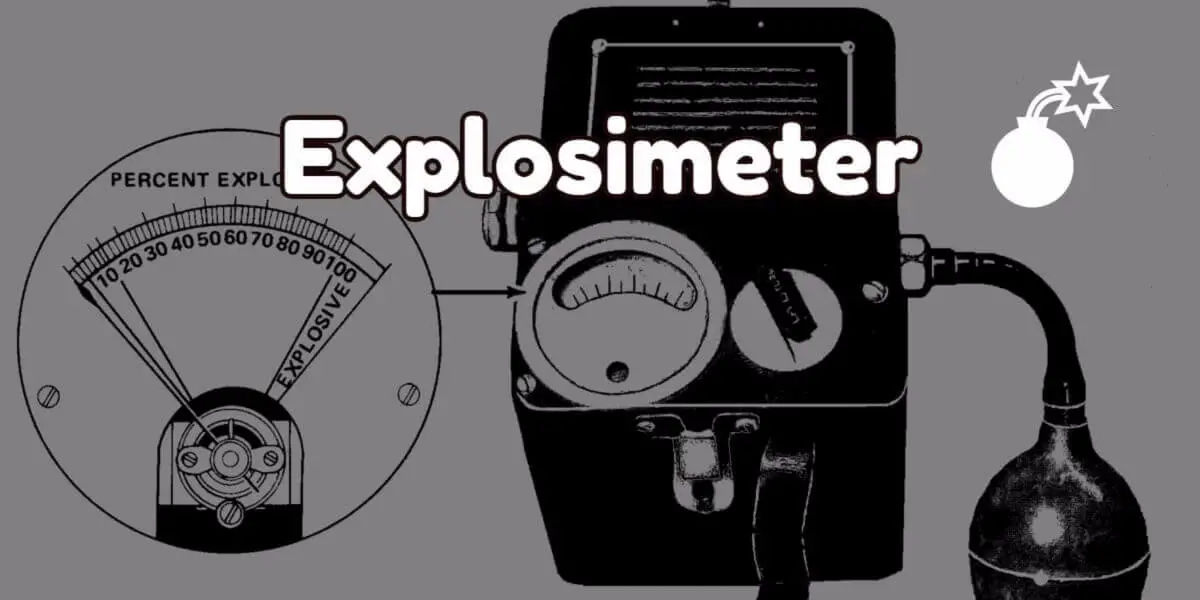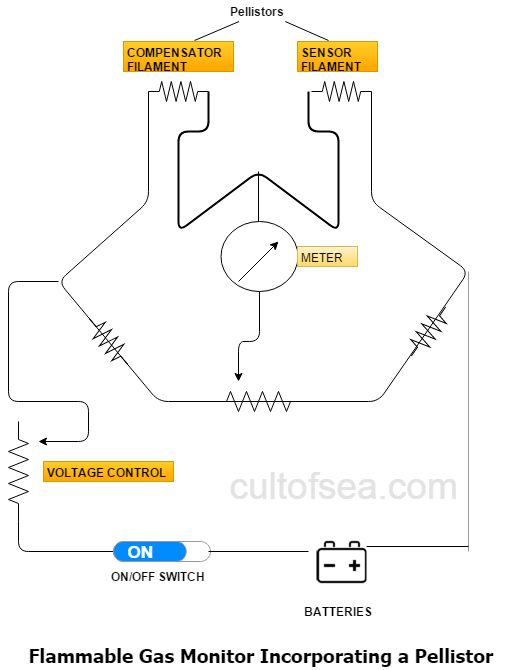Principle
The Combustible Gas Indicator (CGI) or Explosimeter is used to measure the volume of flammable gas in a gas/air mixture. It gives the result as a percentage of the lower flammable limit. It is used to ascertain the atmosphere in a cargo tank when planning tank cleaning in a too lean atmosphere or for evaluation of C/H gas prior to man entry, hot work or other operations.
Marine Safety Appliances MSA 40 is a commonly used CCI. It works on the Catalytic Combustion Principle. A catalytic filament is heated by an electric current. A sample of the atmosphere to be tested is drawn over it and combustion of the flammable gas on the filament further raises the temperature. This, in turn, causes an increase in resistance, which is indicated on the meter as the gas concentration.
The measuring circuit is a balanced Wheatstone’s bridge and for operation three major steps must be taken before samples are drawn into the instrument for analysis:
1. The combustion chamber must be swept free of combustible gases and filled with fresh air.
2. Batteries must be turned on and the proper voltage applied to the bridge.
3. The bridge must be balanced to zero deflection on the meter with fresh air in the chamber.
A gas sample may be taken in several ways:
- Diffusion.
- Hose and aspirator bulb (one squeeze equates to about 1 metre of hose length).
- Motorized pump (either internal or external)
Flammable vapours are drawn through a flashback arrester into the pellistor combustion chamber. Within the chamber are two elements, the Detector and the Compensator. This pair of elements is heated to between 400 and 600°C. When no gas is present, the resistances of the two elements are balanced and the bridge will produce a stable baseline signal. When combustible gases are present, they will catalytically oxidize on the detector element causing its temperature to rise This oxidation can only lake place If there is sufficient oxygen present. The difference in temperature compared to the compensator element is shown as % LFL.
The reading is taken when the display is stable. Modern units will indicate on the display when the gas sample has exceeded the LFL.
Care should be taken to ensure that liquid is not drawn into the instrument. The use of an In-line water trap and a floating probe fitted to the end of tho aspirator hose should prevent this occurrence. Most manufacturers offer these items as accessories
Cautions
Poisons and Inhibitors
Some compounds can reduce the sensitivity of the pellistor.
- Poisons – these are compounds that can permanently affect the performance of the pellistor and include silicone vapours and organic lead compounds.
- Inhibitors – these compounds act in a very similar way to poisons, except that the reaction is reversible. Inhibitors include hydrogen sulphide, freons and chlorinated hydrocarbons. If the presence of hydrogen sulphide is suspected, this should be tested for before any measurements of hydrocarbon vapours are carried out.
Pressure
Pellistor type instruments should not have their sensors subjected to pressure as this will damage the pellistor. Such pressurization may occur, for example, when testing hydrocarbon gas mixtures at high velocity in vapour lines or from a high-velocity vent.
The above Is also relevant when using multi-gas Instruments. For example, when an infra-red sensor is being utilised for taking a % Vol gas reading, any pellistor sensor in the instrument may suffer damage if the inlet gas stream into the Instrument is at a pressure or has a high velocity.
Condensation
The performance of pellistors may be temporarily affected by condensation. This can occur when the instrument is taken into a humid atmosphere after it has been In an air-conditioned environment Time should be allowed for Instruments to acclimatize to the operating temperature before they are used.
Combustible Mists
Pellistor instruments will not indicate the presence of combustible mists (such as lubricating oils) or dust.


Leave a Reply